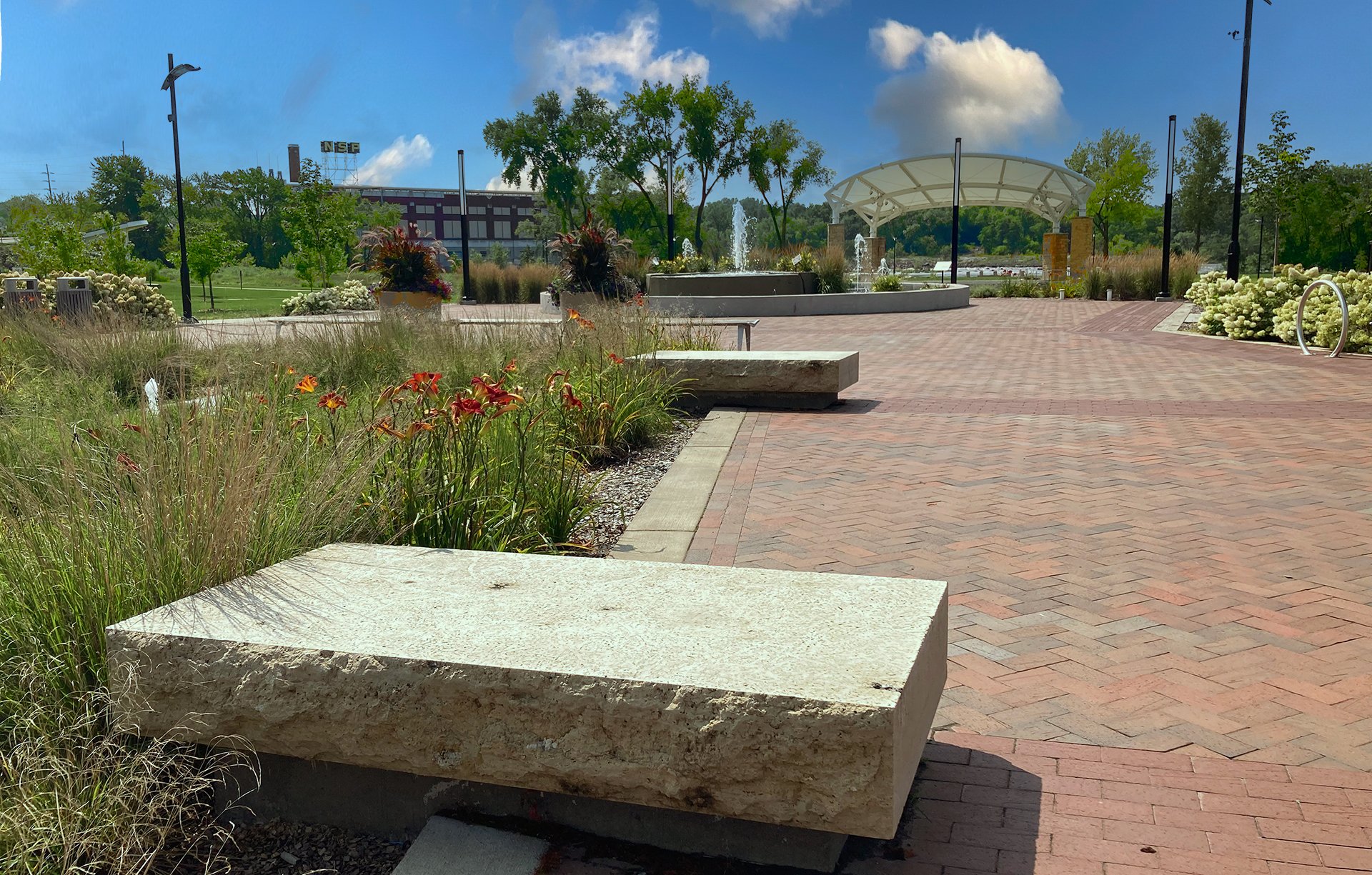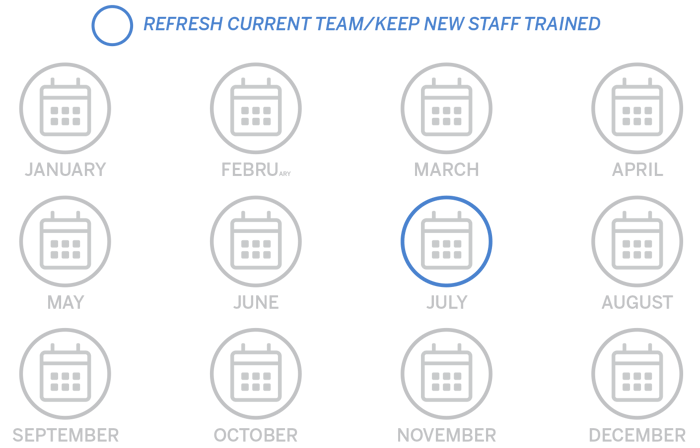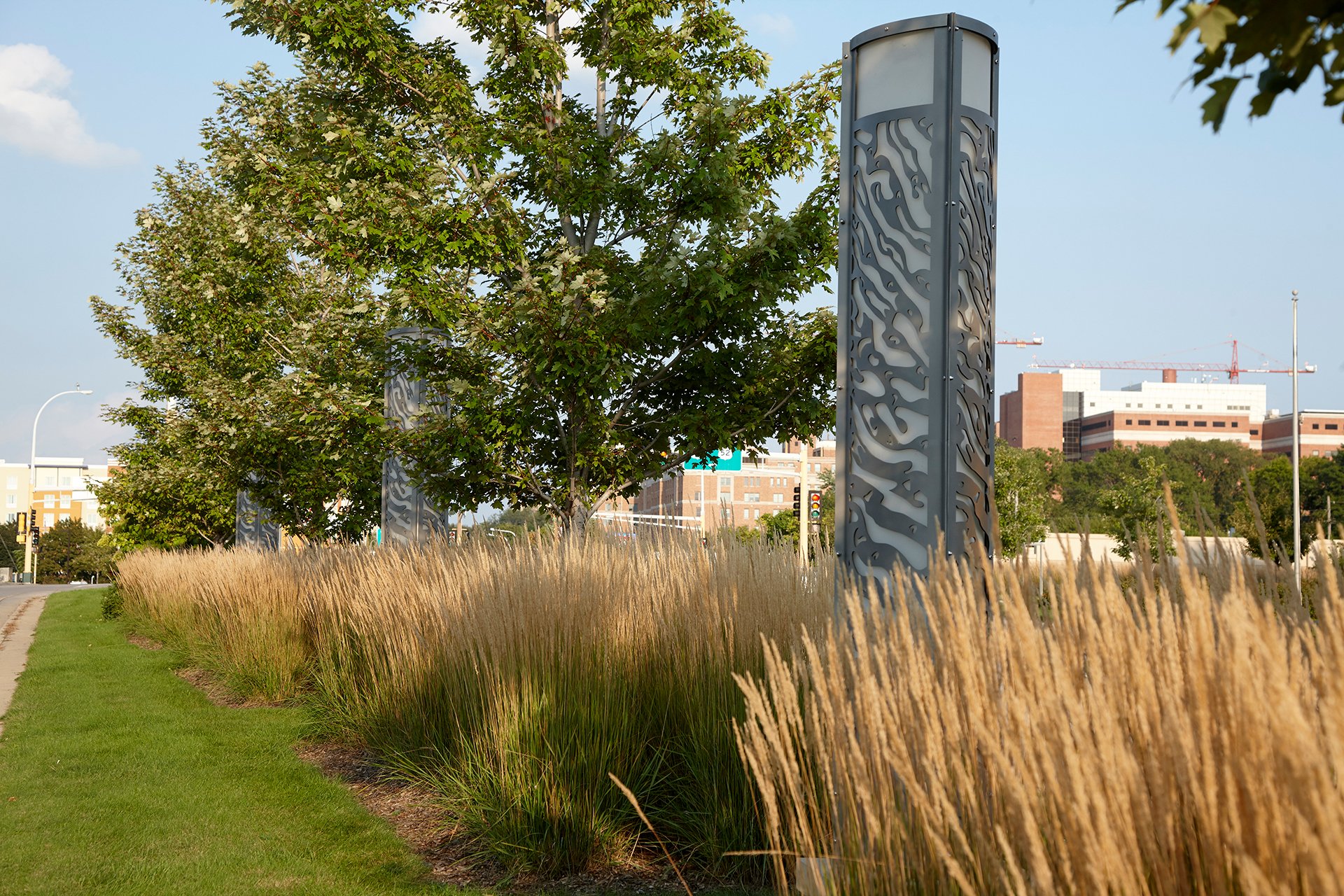Gain valuable insights into sustainable urban development as Emily Jennings draws from her real-world experience. Emphasizing the power of collaboration, smart plant selection, thorough training, community involvement, and the enduring practicality of common sense, Emily outlines a clear path to creating greener, more resilient urban spaces.
Sustainable urban development is all about mixing the best of both worlds – like combining complete streets with green infrastructure. It's a smart blend that tackles environmental and community needs in one fell swoop. Each piece of the puzzle has to fit just right, and while some parts might come naturally, others call for a bit of teamwork and fresh thinking. The key is making sure everything works together to create the best outcomes for the community, with a little creativity along the way.

Let’s start with a definition of green infrastructure. While many definitions exist, one that stands out is "managing the rain where it falls." How can you go wrong when you’re mimicking Mother Nature before infrastructure was built? Okay, there are plenty of ways you could go wrong, but it’s true in the most basic form!
Complete streets, on the other hand, are the whole package: accessible, safe, resilient, functional, and attractive. These thoroughfares don't just make neighborhoods and businesses better, they also boost economic opportunities for the whole community.
Now, how do these two work together?
Related content: How to Address 8 Common Challenges of Complete Streets Design (sehinc.com)
Multi-Department Collaboration = Community Success
Just like the street components, all stakeholder departments need to work together to construct the best options for the community collectively. A plan developed by one department isn’t always going to be accepted throughout. Departments should collaborate for mutual benefits, including planning, engineering, streets, traffic safety, mobility, fire, water, sanitary, and stormwater. Working together is the best way to determine how one amenity may affect another and how there may be mutual co-benefits or challenges. For example, one department’s bump out/curb extension rain garden may be another’s traffic calming and pedestrian safety amenity. The same feature could also become the roadway maintenance crew’s worst plowing nightmare.

Even more important is securing buy-in from everyone. A plan where all stakeholders have been heard will minimize clashes during implementation. Not to mention, it never hurts to learn everyone’s constraints.
Evaluating Options Beyond Native Plants
While native plants are optimal, they might not always be the best fit. In certain neighborhoods, recognizing familiar plants is crucial. For example, if you can plant a hardy rose that the neighbors recognize from a weed, they are more apt to help you maintain it as they care for their own yards. Striking the right balance between aesthetics and efficiency, whether hardy roses or low-mow grasses, is crucial, as is aligning with community expectations.
Another perspective on plant selection arises if neighbors prefer the routine of mowing parkways and prefer something other than garden aesthetics. In those cases, considering native plants that neighbors can easily maintain decreases city crew time and better aligns with expectations, potentially avoiding replanting if traditional rain garden plants are mowed over.
Finally, besides making sure the plants are salt tolerant, you will want to make sure they’ll be resistant to predicted future changes in temperature.

Related content: The Power of Trees in Shaping Sustainable Urban Places (sehinc.com)
Ensuring Buy-in Through Strategic Training
It’s essential to ensure that all staff involved in the design and maintenance of streets are trained in the plan as a whole and their part(s) in it. Some of these roles may be new to them, and telling them why they are doing a job can be just as vital as knowing how to do it. A well-informed team is more likely to take ownership of the initiative, leading to higher-quality implementation and long-term success.
Training should go beyond technical skills to include the broader goals of sustainable urban streets, such as improving walkability, enhancing safety, and incorporating green infrastructure. This helps staff connect their daily tasks to the bigger picture, fostering a sense of purpose and commitment. Also, be sure to keep this in mind when onboarding new staff, ensuring that sustainability principles remain embedded in the organization’s culture over time. Offering periodic refresher courses and opportunities for hands-on learning can reinforce these concepts and keep staff engaged as best practices evolve.
Determining Maintenance Plans

This is another area where having everyone at the table is best. Find ways to engage the team in maintenance discussions to explore questions such as: For curb extensions or traffic islands, can we plow around it? Can we sweep it? Do we have the recommended sweepers for porous sidewalks and bike paths? How about porous pavement? Even better, can our maintenance shop maintain those sweepers? (Note that fleet managers may be needed at the table for this one.) It is also important to determine how crews will know what the best practice is and how often to maintain it. Finally, it is crucial to identify who will maintain each type of practice.
Proactive Community Engagement
As mentioned before, when the community has buy-in, everyone's job becomes easier. Make sure you let the community know what is going on and why. Transparency builds trust, and an informed community is more likely to support changes rather than resist them.
The best plan is to give them choices – for example, find out if they want flowers and present them with a palette to choose from. Small but meaningful decisions like this empower residents and help them feel personally invested in the outcome. Expanding engagement efforts through interactive workshops, surveys, and public meetings can further strengthen relationships and ensure that diverse voices are heard.
Additionally, consider long-term engagement by creating volunteer programs or neighborhood stewardship initiatives that encourage community members to take an active role in maintaining and enhancing these spaces. The more people feel connected to the project, the more likely they are to champion its success and longevity

Related content: 5 Ways to Engage Stakeholders and Get Your Community Behind a Project (sehinc.com)
Common-Sense Strategies
Next, let's think about balancing installation and maintenance efficiency. It’s good to at least have a scale for maintenance versus the benefits of each practice. There aren’t always choices, but when there are, it’s important to prioritize practices that offer the best bang for the buck. Think about clustering smaller practices so that those with similar maintenance needs are near each other. For example, if you put smaller bioswales together, you reduce crew and vehicle time going from place to place for maintenance. Make sure practices that need combined sewer cleaning truck maintenance are put into the work order system so that, to the extent possible, they will be maintained when the trucks are already in an area. Carefully planning out these steps will help streamline upkeep, optimizing resources effectively.
Regularly Revisit and Revise the Plan
As good as all this information is, you will learn valuable lessons as you implement green streets in your community. Make sure you set aside time to get the team together again and see if the plan requires updates. Do this annually, or at least every other year, to refresh the original team and keep new staff trained. This also reminds everyone that each department has its own struggles and to keep them in mind as they all do their parts.

Bringing It All Together
The installation of green infrastructure is about doing it as a team with common goals. If you keep these key points in mind and bring together a team that sees the purpose and respects everyone else’s positions, you can make great strides in reducing flooding and improving the quality of your waterways.
Ready to take the next step in building more sustainable urban streets? Start by assessing your current infrastructure and engaging key stakeholders in the conversation. The sooner you align your team and community around a shared vision, the sooner you’ll see lasting environmental and social benefits. Let’s create streets that work for everyone – today and for generations to come.

About the Expert

Emily Jennings is a senior professional engineer specializing in municipal, industrial and construction stormwater permitting, hydraulic and hydrological analysis, permanent stormwater management facility design, and stormwater conveyance modeling. Emily has extensive experience assisting clients with stormwater regulations, policies, and infrastructure compliance.

.png?width=113&name=SEH_Logo_RGB%20(1).png)
